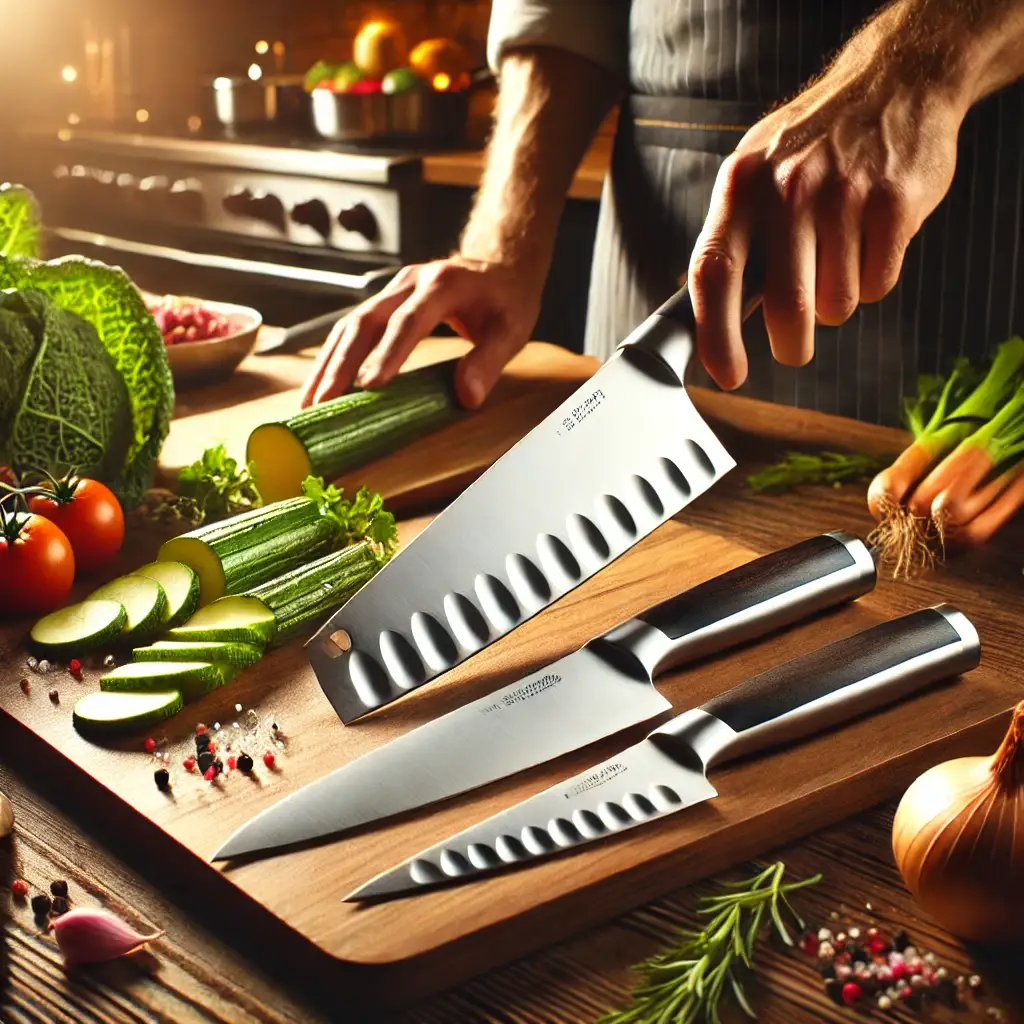The Ultimate Guide to Chef’s Knife Sets: Essential Tools for Every Kitchen

Introduction to Chef’s Knife Sets
A high-quality chef’s knife set is a fundamental
investment for any home cook or professional
chef. These sets typically include a variety of
knives designed to handle various cutting tasks
with precision and ease. In this guide, we’ll
explore the benefits of owning a chef’s knife set,
tips for choosing the right one, and essential care
instructions.
Benefits of Using a Chef’s Knife Set
1. Versatility
Chef’s knife sets usually come with multiple
knives, including chef’s knives, paring knives,
serrated knives, and more. This variety allows you
to tackle a wide range of cooking tasks, from
chopping vegetables to slicing bread.
2. Improved Efficiency
Having the right knife for each task can
significantly enhance your cooking efficiency. A
well-designed knife set allows for smoother,
quicker cutting, reducing prep time and making
cooking more enjoyable.
3. Precision and Control
High-quality chef’s knives are crafted for balance
and weight, providing better control during use.
This precision leads to cleaner cuts and more
consistent results, which is especially important
for presentation.
Tips for Choosing the Right Chef’s Knife Set
1. Consider Knife Material
Chef’s knives are typically made from stainless
steel, carbon steel, or ceramic. Stainless steel is
durable and resistant to rust, while carbon steel is
sharper but requires more maintenance. Ceramic
knives are lightweight but can chip easily.
2. Look for Comfort and Ergonomics
When selecting a knife set, handle comfort is
crucial. Look for knives with ergonomic handles
that provide a good grip, allowing for longer, more
comfortable use.
3. Check the Weight and Balance
The weight and balance of a knife affect its
usability. Hold the knife to see how it feels in your
hand. A well-balanced knife should feel
comfortable and easy to control.
Essential Care for Chef’s Knife Sets
1. Regular Cleaning
Always hand wash your knives with mild soap and
warm water after use. Avoid putting them in the
dishwasher, as the high heat and moisture can
damage the blades and handles.
2. Proper Storage
Use a knife block, magnetic strip, or protective
sheaths to store your knives safely. This prevents
dulling and protects both the blades and your
hands.
3. Sharpening Techniques
Regularly sharpen your knives to maintain their
cutting performance. Use a whetstone, honing
rod, or professional sharpening service to keep
your blades in top condition.






